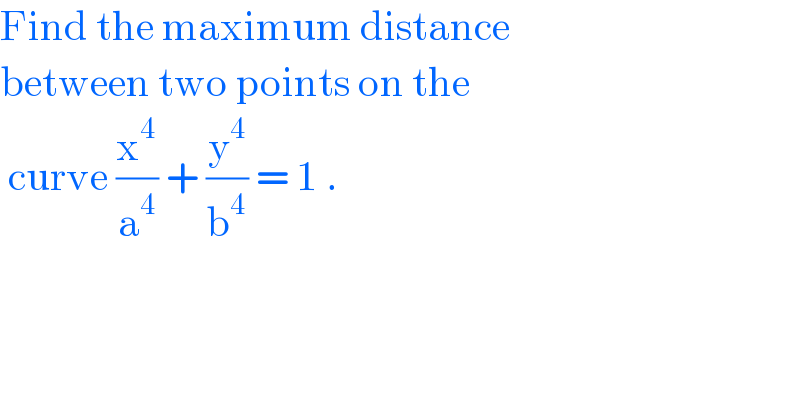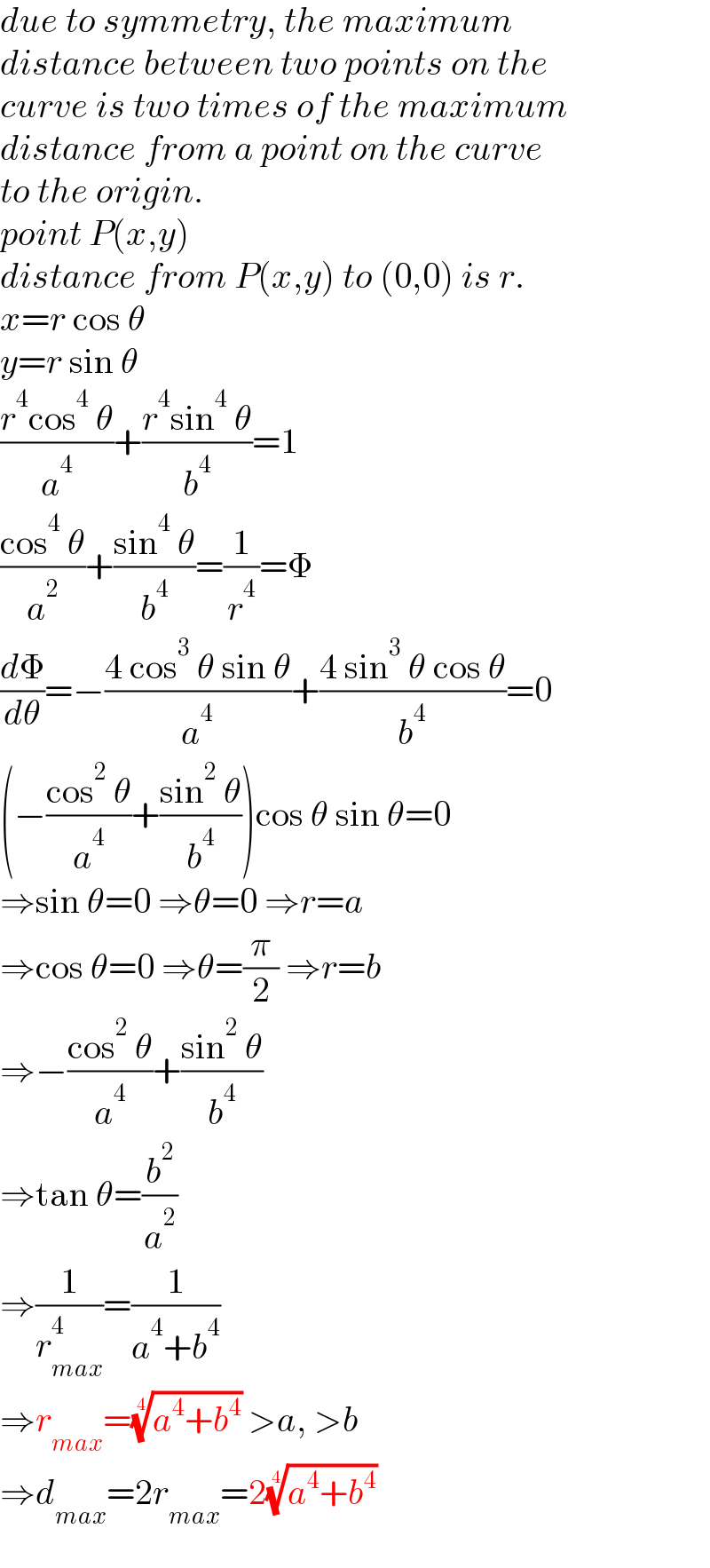
Question and Answers Forum
Question Number 144995 by liberty last updated on 01/Jul/21

Answered by mr W last updated on 01/Jul/21

Commented by mr W last updated on 01/Jul/21

| ||
Question and Answers Forum | ||
Question Number 144995 by liberty last updated on 01/Jul/21 | ||
 | ||
Answered by mr W last updated on 01/Jul/21 | ||
 | ||
| ||
Commented by mr W last updated on 01/Jul/21 | ||
 | ||